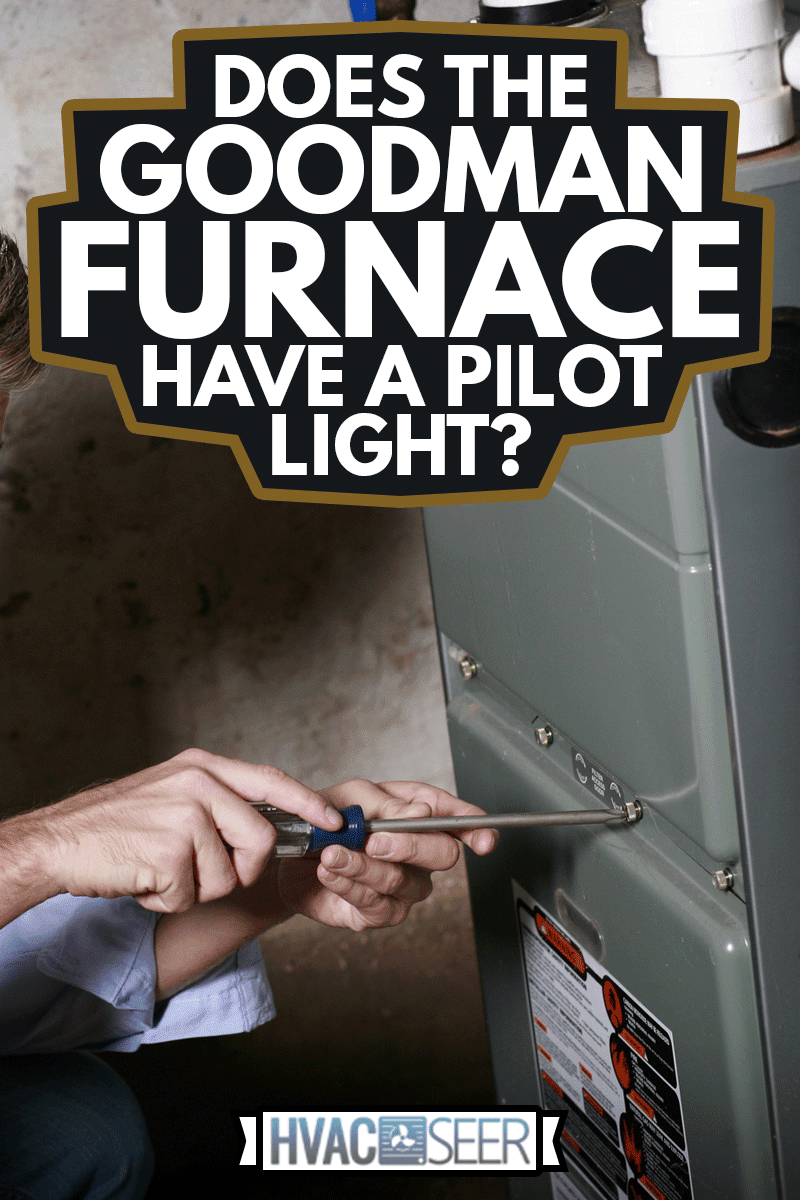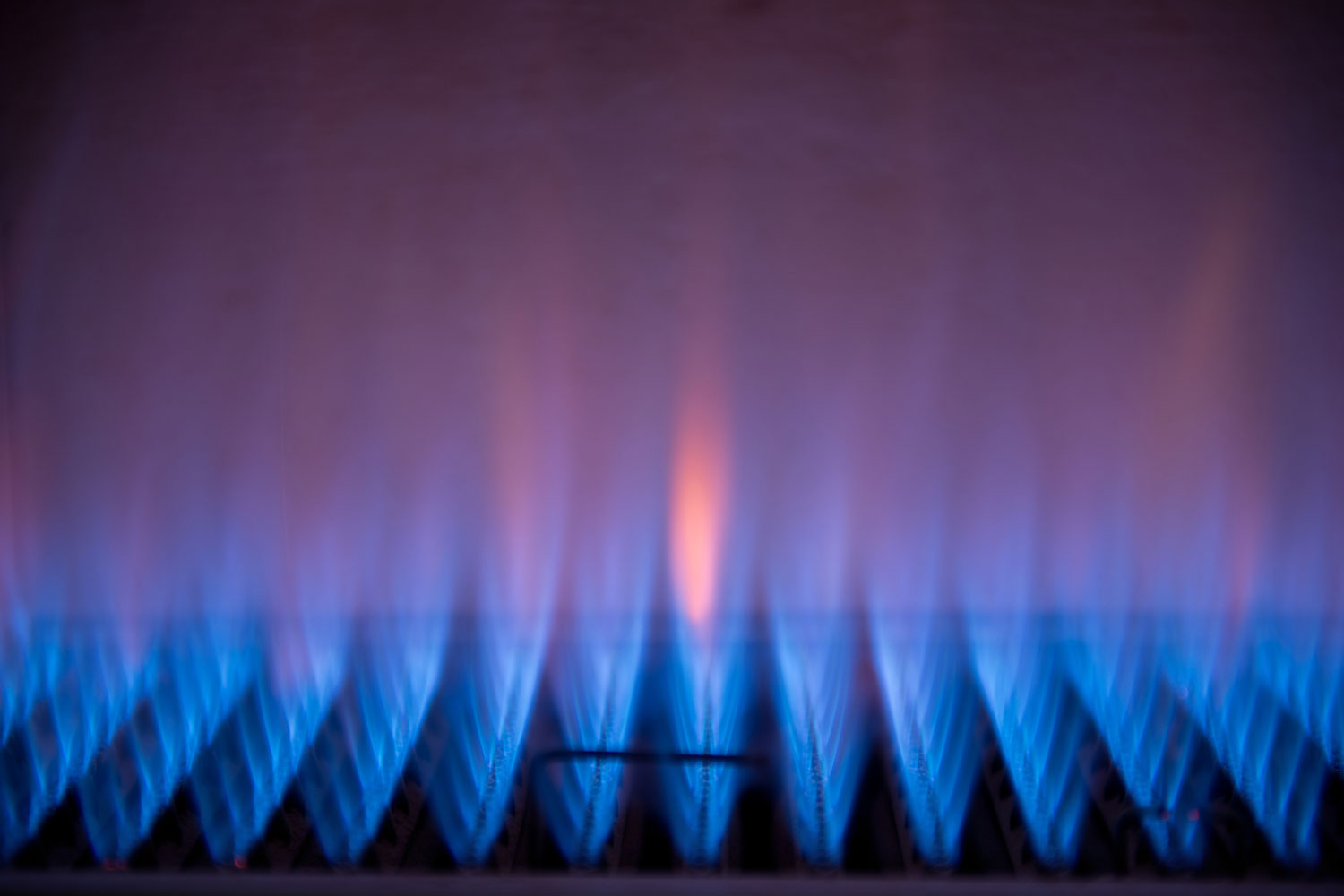If you've ever been on the market for a new furnace, you've likely heard of the Goodman brand. And if you ever owned a gas-operated furnace, you should be somewhat familiar with pilot lights and how they operate. But do all Goodman furnaces have a pilot light? And is it better to have a furnace without one? We have researched the answer to these questions, in this post, we will answer them for you.
Goodman furnaces do have a pilot light as these furnaces are gas-operated. The pilot light on a Goodman furnace is located inside the front panel and in front of the heat exchanger. To access it, you'll need to remove the front panel of the furnace.
If your pilot light goes out, you can light it manually in case of an emergency. However, extreme caution should be used when doing so. Continue reading to learn more about how to light the pilot light as well as other features of Goodman furnaces.

Do all-natural gas furnaces have a pilot light?
Yes. When you see the term all-natural or natural gas furnace, it usually means that the furnace is gas-operated, using pilot light ignition. Some newer gas furnaces don't have a typical pilot light. Instead, they are operated by electronic ignition systems, and the pilot light is only on when the unit is in operation.
The traditional pilot light doesn't work the same way on newer models. Electronic ignition furnaces are making a mark in the HVAC space, as they have certain advantages.
The ignition on these models is also known as hot surface ignition. These furnaces are operated by an electronic device that transfers an electrical current to the heat exchanger whenever the furnace is turned on.
As a result, the ignition heats up similarly to a gas furnace to ignite the burners and provide heat to a home. Let's take a look at some of the benefits of this type of furnace.
They offer savings on the gas bill
The biggest benefit of electric ignition furnaces is their ability to help you save on the gas bill. Unlike traditional pilot light furnaces, these units don't need gas to operate 24/7. Instead, they rely on electricity and only require gas consumption when the pilot needs to be lit.
They don't blow out
Another great takeaway from electric ignition furnaces is that you don't have to worry about the pilot light blowing out. The pilot light is only lit intermittently on these furnaces and doesn't run 24/7 as with natural gas-operated furnaces. And even if the pilot light does blowout, you can turn it on without manually re-lighting it.
They have less potential for carbon monoxide exposure
Since the pilot light is not lit constantly, these furnaces are less likely to produce excess carbon monoxide, which can be hazardous.
The Downsides of Electric Ignition Furnaces
Electric ignition furnaces are not without their own set of problems, however. Let's take a look at some of the most common ones.
Faulty wiring
Similar to gas-operated systems, these furnaces can malfunction from issues related to their electronic components. This can include issues related to cross-wiring inside the junction box or ones within the furnace unit itself. If the outlet has worn or burned out wires, the ignitor will not function, and the unit will not be operational.
Circuit board failure
Another big issue with these furnaces is the failure of the circuit board. The circuit board acts as the nucleus of the furnace, allowing the unit to receive and distribute electronic currents through a series of fuses.
If the board is old or faulty, you may see false LED readouts on the furnace. These readouts can lead to component failure. The circuit board on these furnaces can be pretty expensive and may range anywhere from $100 to over $300, depending on the make and model of the furnace.
Less longevity
When compared to traditional gas-operated furnaces, electric ignition furnaces tend to have a shorter shelf-life. While traditional furnaces may last anywhere to 10 to 15 years, these furnaces typically last anywhere from 7 to 10 years, depending on the brand.
One way to extend the life of your furnace is to have it maintained at least once a year by a licensed HVAC professional. The technician can inspect the furnace to ensure the components work properly and advise on any issues that need to be addressed.
Is a Goodman furnace any good?
Yes. Goodman furnaces are some of the most reliable furnaces in the marketplace. Goodman is known for providing affordable furnaces that deliver outstanding efficiency and dependability. If you are looking to purchase a reliable furnace, but that doesn't break the bank, Goodman is a brand to consider.
These furnaces are relatively easy to install and maintain. On average, a Goodman furnace will last anywhere from 10 to 15 years or more if it's well-maintained.
The Goodman brand furnaces feature a 10-year limited parts warranty and a lifetime limited warranty on the heat exchanger. Overall, the replacement parts for the furnace run on the lower end of the spectrum compared to other brands such as Rheem or Lennox.
How do you light the pilot light on a Goodman furnace?

Lighting a pilot light on a Goodman furnace is a fairly simple process. Let's look at the steps involved:
- Take a screwdriver and unscrew the side screws on the front panel. Then slide the panel up and pull it off of the furnace. The exact location of the pilot light will vary per model, but you can refer to your user manual to find it. When you find the pilot light location turn the switch to the "Off" position.
- Next, wait about 10 to 15 minutes for any remaining gas to dissipate.
- Then, while holding your lighter against the pilot opening, rotate the switch to the "Pilot" position to ignite the flame. You'll need to press the button to turn it—and it may take a few tries to do it the first time. It's best to light the pilot light with a barbeque lighter, as it can be pretty tricky to reach with a match.
- After igniting the pilot, keep the button pressed for about 30 seconds to ensure that it doesn't burn out.
- Once you are sure that the pilot light is burning strongly, turn to switch to the "On" position. If the pilot light does not stay on after you light it, try it two or three more times. If it continues to burn out after a few seconds or minutes, the chances are that there is either an issue with the furnace itself or the gas supply.
Check out this lighter on Amazon.
Is it dangerous if a pilot light goes out on a furnace?
If the pilot light repeatedly goes out on a furnace, it can be dangerous if the gas supply line is still supplying gas to the furnace. In this scenario, even the smallest flame can spark an explosion in the furnace's location.
For this reason, you should immediately investigate the unit to determine why the pilot light has gone out. Let's look at some of the most common reasons why it may happen.
Reasons Why A Pilot May Not Light
If the pilot light repeatedly goes out, the chances are that there's an issue with the furnace that needs to be addressed. Let's look at a couple of common reasons why a pilot light may not light.
Debris clogging the components
The pilot light on older furnaces can become clogged with dirt and debris that blocks the gas supply access. As a result, the pilot will not stay lit and may continuously burn out every few seconds or minutes. To fix the issue, you can take a stiff bristle toothbrush to gently scrub the tip of the pilot light to remove any soot or debris that may have accumulated.
You can also apply a degreasing solution to the pilot light, similar to that commonly used on ovens. To prevent this issue, try cleaning the pilot light every three to four months.
Find this brush set on Amazon.
Ignition switch issues
Over time, the ignition switch on a furnace can also wear out. If the ignition switch becomes faulty, you can simply replace it with a new one. You can determine if the ignition switch has continuity by using a multimeter.
Find this multimeter on Amazon.
Wrapping Things Up
We hope that this post has helped explain how the pilot light functions on Goodman furnaces. Note that modern Goodman furnaces will still have a pilot light, though its functionality may differ slightly per the unit's model. Remember, if you can't seem to troubleshoot pilot light issues on your own, it's always best to contact an appliance technician to provide a consultation.
Before you go, be sure to check out some of our other posts:



